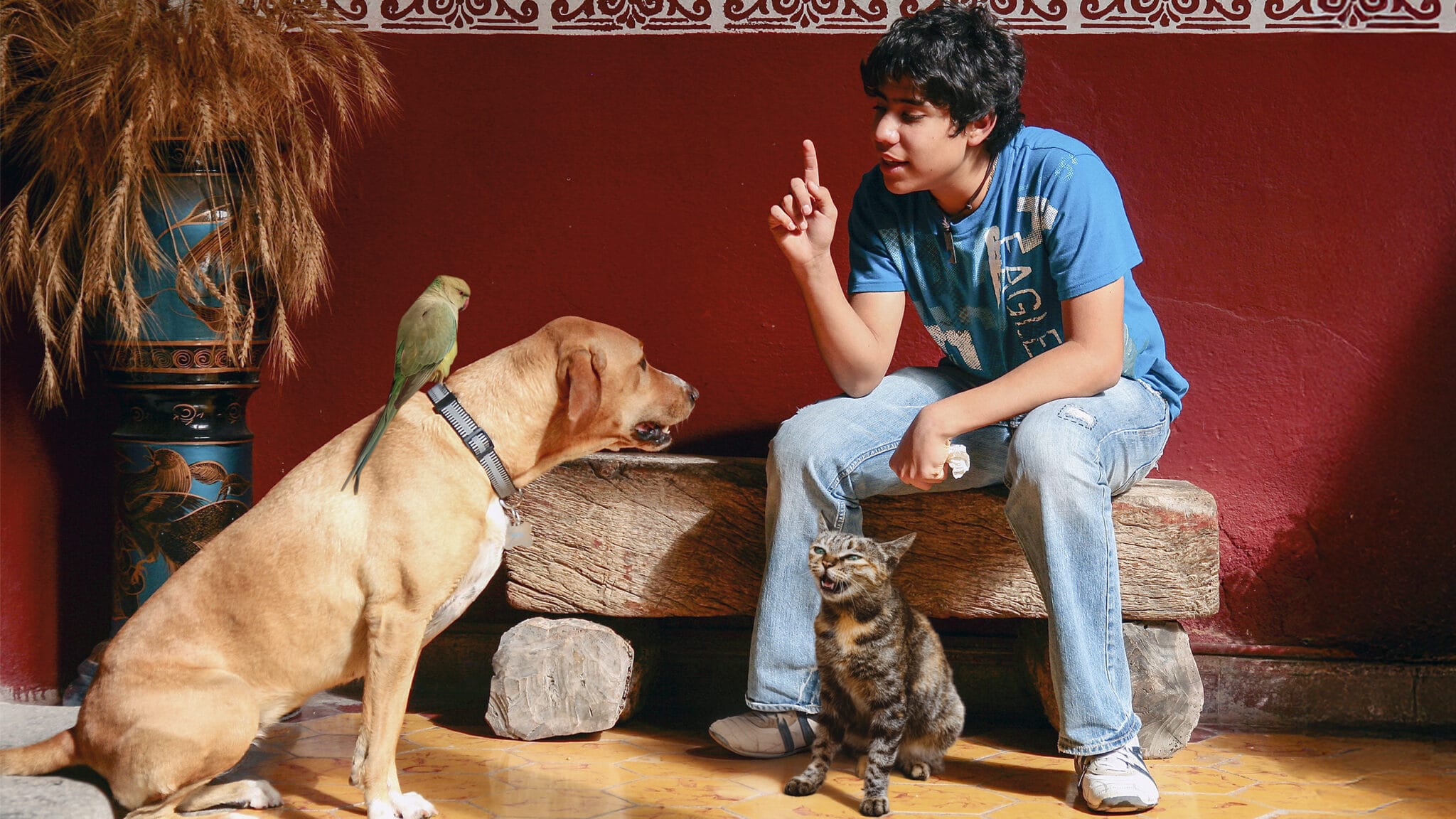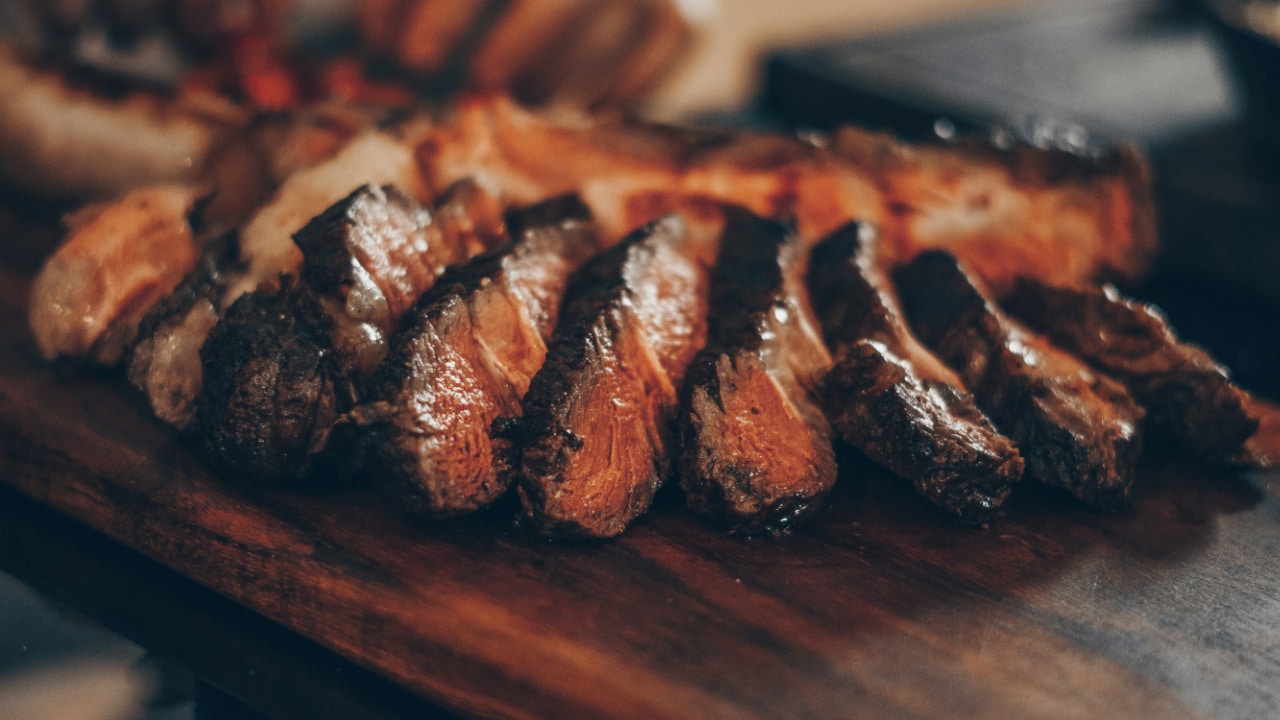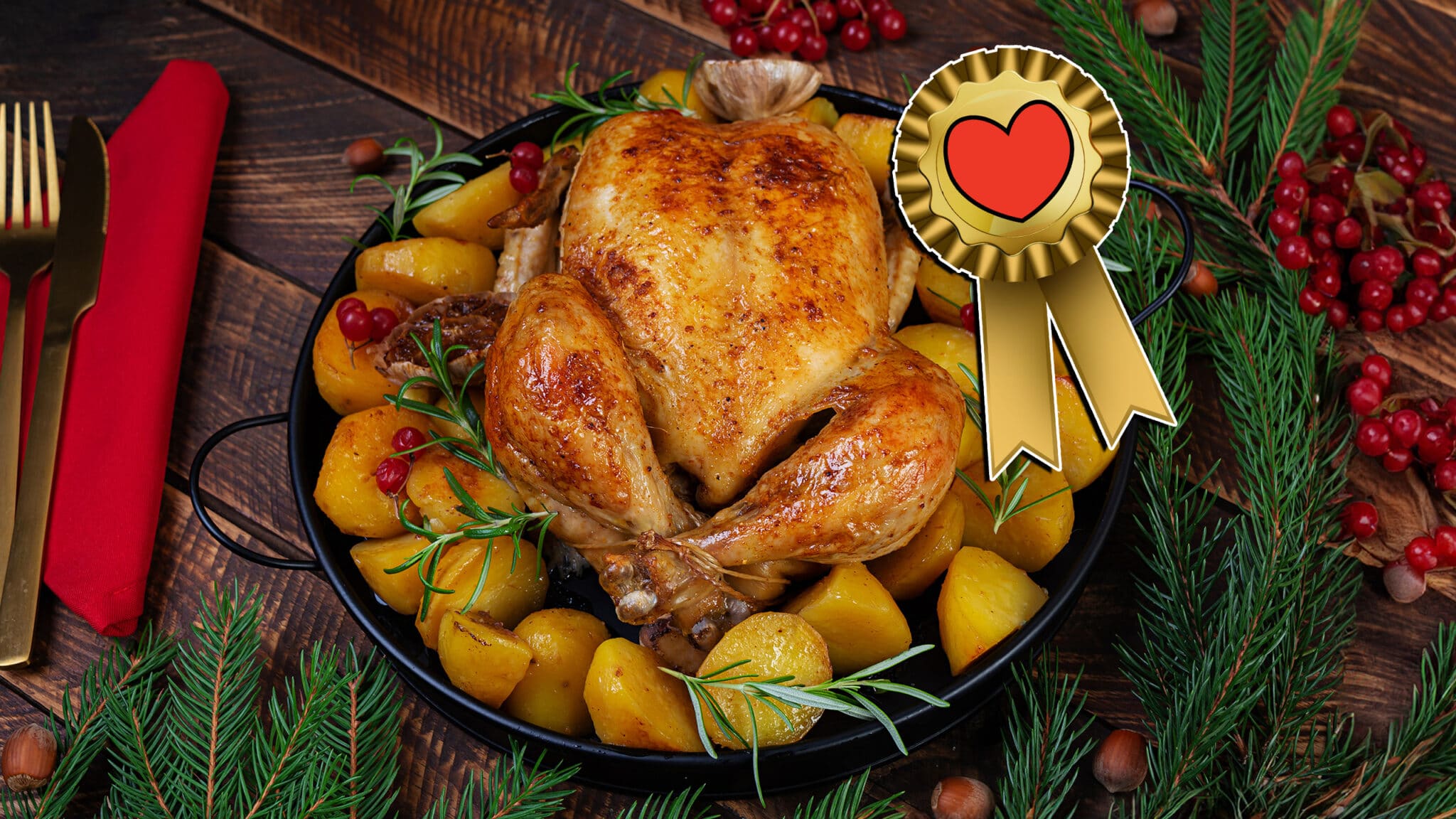Here’s How Latin America Rang In The New Year — And I’m Warning You, You’ll Get A Sudden Urge to Pack Your Bags
If you’re feeling a travel itch for next New Year’s Eve, look no further than Latin American countries like Uruguay, Colombia, or Ecuador. It’s no secret that us Latinos love a good parranda, partying it up with all our primos and tíos no matter the occasion. Really — we’ve even partied before after a surprisingly good elementary school report card. So, it makes sense that Latin American New Year’s traditions are particularly fun, unique, and unafraid to push boundaries (you’ll see what we mean soon).
And while each Latin American country has different traditions for Nochevieja, one thing is for sure — almost all of us eat grapes when the clock strikes 12:00. That tradition is an export from Spain, with each of the 12 grapes symbolizing a different month in the following year. So we can thank them for having to fight fellow grocery shoppers every year for a bag of uvas:
In essence, you know you’re Latino when you go into full “panic” mode on New Year’s Eve after realizing you forgot to buy grapes. Mami always knows the store that might still be open, though:
We digress. Those 12 grapes aside, each Latin American country brings different traditions for New Year’s Eve that you may not expect. Ranging from burning effigies, to paying tribute to Candomblé spirits, to eating lechón on a spitfire, each culture brings something unique for Nochevieja. If you’re looking to expand your New Year’s Eve traditions for next year, or plan a fun trip for December 2024, we’ve got you.
Ahead, find some of the most interesting Latin American New Year’s traditions that may surprise you.
1. Uruguay
First stop? Get into a beer fight at La Batalla de Sidra in Montevideo, Uruguay, also known as the Cider War Festival, which traditionally takes place on the street on December 31. Designed by Uruguayans as a way to start the next year with a clean slate, La Batalla de Sidra is like a water fight… you just end up soaked in beer and cider by the end of it.
Watch a video of the event here to see how Uruguayans dance around, throwing cider on each other as part of their friendly “war”:
2. Chile
On a more serious note, the people of the Chilean city Talca ring in the New Year by visiting their dead loved ones at local cemeteries. As per Financial Times, the people of Talca gather at cemeteries to honor those who have passed, lighting candles, laying flowers on graves, and drinking refreshments. Interestingly enough, this tradition got started after a Talca-based cemetery employee died in the 1980s, prompting his family to celebrate his life at his grave on Nochevieja. Somehow, the practice became more popular— and thousands of people take part in it today.
3. Brazil
Next up, many residents of Río de Janeiro, Brazil celebrate their Festa de Iemanjá every New Year’s Day, celebrating the Candomblé sea goddess Iemanjá (also known as “Yemaja” in other Yoruba-based religions). While people in Salvador, Brazil celebrate the tradition on February 2, Río de Janeiro pays tribute to the water spirit at the start of the new year. People go to the beach dressed in all-white, leaving flowers and other gifts at the shore for Iemanjá. While believers make shrines at the shore, thousands more watch the beautiful tradition, which also involves dancing and singing.
People ask Iemanjá for luck and prosperity in the new year, jumping a total of seven waves for extra good luck:
4. Panama
Panama is a country with out-of-the-box New Year’s Eve traditions, at least when it comes to their “año viejo” dolls. As explained by La Estrella de Panama, people in this country make detailed, elaborate, life-size año viejo dolls that represent hope for the next year— and leaving all the bad vibes behind on New Year’s Eve. Panamanians burn their año viejos when the clock strikes 12:00 on December 31, symbolizing purification, and “burning away” any negative situations that plagued them that year. As per Telemetro, this ritual of burning effigies is rooted in Indigenous traditions. It’s also present in many other Latin American countriies, including Honduras, Ecuador, and Colombia.
Here’s Honduras’ version, which they call “monigotes”:
5. Venezuela
Latin American New Year’s traditions often incorporate superstitions, and Venezuela’s cultural offerings are no exception. If you have Venezuelan friends, you might know that they believe in running around the house (or the street) with their suitcase on Nochevieja. Why do they do this? To make sure they travel a lot the following year. As one X user described, other Venezuelan New Year’s Eve superstitions include putting money in their shoes for prosperity, and even choosing the right underwear color. Eating lentils on NYE is also said to bring economic prosperity— the more you know!
6. Argentina
As a country that is south of the equator, Argentina is actually quite hot on New Year’s Eve. While some Argentines might dream of a “White Christmas,” it’s most probable that they won’t get it. However, many take advantage of this by ringing in the New Year by the beach. As the Embassy of Argentina in the United States once put it on X, New Year’s Eve in this country is all about eating beef with a glass of Malbec while dining outdoors. Another very-cool New Year’s tradition you may catch while traveling to this country, though? The iconic “Lluvia de Papelitos,” or when residents throw torn-up calendars out their windows on January 1. While there are talks about putting a stop to all the littering, it’s a sight to see:
7. Mexico
Moreover, Mexico is another country that incorporates special superstitions and rituals in their New Year’s Eve traditions. For one, an interesting practice involves lighting a few candles on a white plate, surrounding them with food products like lentils, beans, and corn, and letting the candles melt. Later, bury the remains for tons of prosperity in the new year. Mexicans also eat lentils for good luck, and eat 12 grapes. A few other NYE traditions that set them apart though? For one, gifting sheep figurines as symbols for money and prosperity (they don’t call it “lana” for nothing), briefly getting under the table after the New Year’s Eve countdown for finding love, and… lots of cleaning.
As one Mexican X user wrote, they do not do laundry on Nochevieja, and the house must be spotless for good luck. As they hilariously wrote, “Being superstitious can be exhausting.”
Another X user explained how cleaning your house on Nochevieja symbolizes getting rid of “la mala suerte”:
8. Cuba
Over in Cuba, you might get surprised if strolling through the streets during Nochevieja celebrations. Why? Well, you might get soaked in water. In fact, one of Cuba’s most notable New Year’s Eve traditions involves throwing a bucket or jar of water out onto the street. This is a way to bid farewell to the last year, “washing away” past negative situations, and to start fresh on New Year’s Day. A positivity ritual, it is sometimes referred to as “el Cubazo,” and is all about cleaning out your energy. We’re so here for it.
Conversely, Cuban also practices a similar tradition to Panama and Honduras when it comes to burning dolls on NYE. This custom also represents clearing away any negativity in the past year:
9. Puerto Rico
Puerto Rico is another Caribbean island that really does it up when it comes to New Year’s Eve, because… well, Boricuas love to party. While Héctor Lavoe and Willie Colón’s epic 1979 New Year’s performance in San Juan was a one time thing, Puerto Ricans have tons of party-ready traditions to give them solace. For one, they traditionally drink pitorro, a distilled sugarcane kind of “moonshine” that is customized at home with a range of fruits. Go to the island and enjoy street parties in the placitas, people throwing water from their homes, and even parrandas, where people just show up at your home singing aguinaldos… and you invite them inside to eat, drink, and yes, party.
The lechón on New Year’s Eve is great, too:
10. Colombia
When it comes to Latin American New Year’s traditions, Colombia is another country that puts extra-emphasis on magic and superstitions. In fact, Colombians are known for being very particular about what color underwear they don on New Year’s Eve, usually opting for yellow. Street vendors across the country sell yellow underwear in droves, which is said to bring economic prosperity in the next year. Conversely, some people opt for red underwear instead if looking for love. Even more, many Colombians place 12 stalks of wheat in their home on New Year’s Eve, representing nutritious abundance and positive change.
11. Ecuador
Last but certainly not least, we couldn’t finish this list without talking about Ecuador’s fascinating “viudas” tradition. Beginning in the 1950s, many Ecuadorian men dress up every New Year’s Eve in women’s clothing, adding wigs and even prosthetic breasts to become “viudas,” or “widows.” These men “mourn” for the end of the year, which is their symbolic “late husband,” and they ask street passerby for spare coins to help them through the “loss.” People recite poems, cry, and deliver Oscar-worthy performances, all to ring in the new year and follow an important, passed-down tradition.




